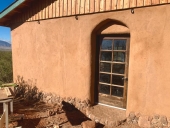
 5
5




 4
4




John Daley Bendigo, Australia The Enemy of progress is the hope of a perfect plan
Benefits of rainfall collection https://permies.com/t/88043/benefits-rainfall-collection
GOOD DEBT/ BAD DEBT https://permies.com/t/179218/mortgages-good-debt-bad-debt
 5
5





 4
4




Remember, moderation in all things, except, perhaps, dietary diversity!
-- James A. Duke
 12
12




Jim Reiland
 2
2




 6
6




Jim Reiland
 1
1




 3
3




I'm only 65! That's not to old to learn to be a permie, right?
 2
2




Blazing trails in disabled homesteading




Where there is Liberty, there is Christ!
 1
1




 5
5




Honest conversation is the most powerful of revolutionary actions.
 3
3




 2
2




Kārlis Taurenis wrote:You can also use toilet paper! I'll try it next week, it looks very easy! Check this: https://www.youtube.com/watch?v=WQlolVGRWic
Blazing trails in disabled homesteading








Kyle Moss wrote:best thing I found was a kemp shredder, heavy duty and it makes straw so fine that it's perfect for filling and plaster.
Blazing trails in disabled homesteading

|
She'll be back. I'm just gonna wait here. With this tiny ad:
Rocket Mass Heater Resources Wiki
https://permies.com/w/rmh-resources
|



